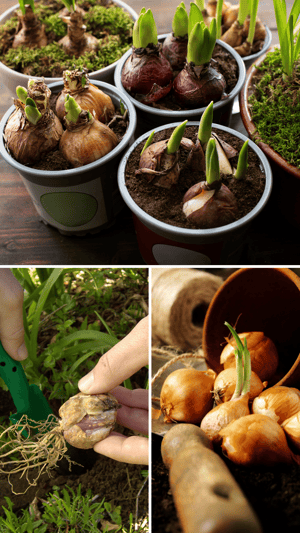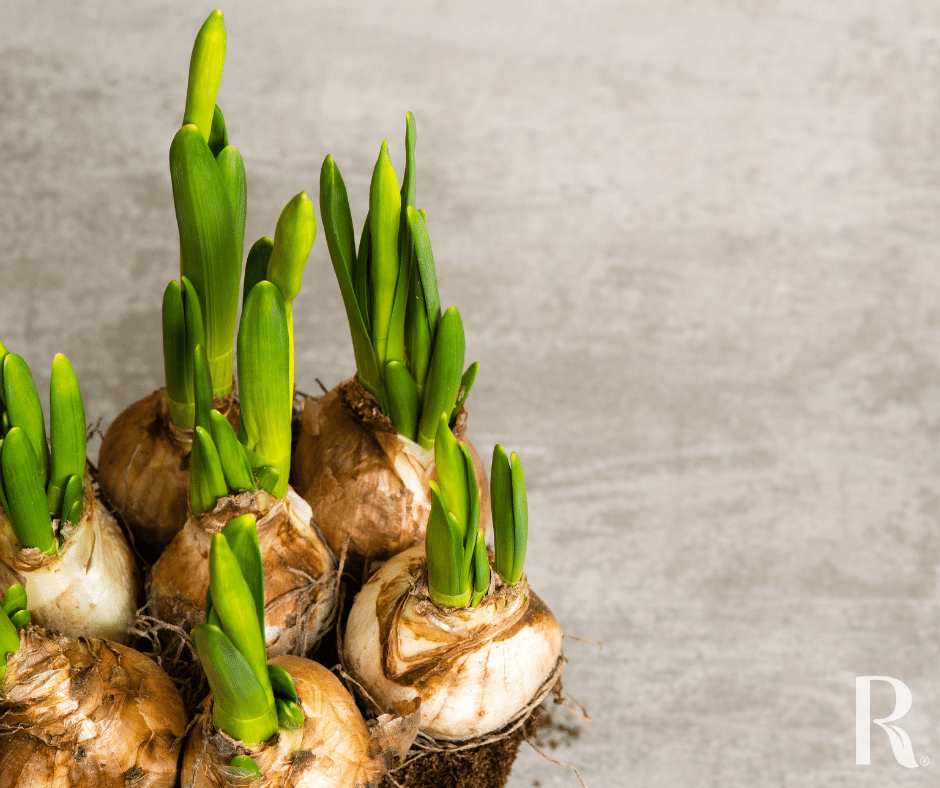Bulbs are relatively easy to grow and offer something special and unique when it comes to springtime flowering.
Now (April to May in Australia) is the best time to get your bulbs planted in preparation for spring.
 Depth: Most bulbs need to be planted twice as deep and wide as the bulb is. Remembering the pointed end of the bulb should be pointing upwards (Ranunculi and Anemone excluded), if you’re unsure – plant them on their side and nature will work it out.
Depth: Most bulbs need to be planted twice as deep and wide as the bulb is. Remembering the pointed end of the bulb should be pointing upwards (Ranunculi and Anemone excluded), if you’re unsure – plant them on their side and nature will work it out.
Soils: Avoid soggy soils for your bulbs. Bulbs prefer a free draining soil. Raise/mound up garden beds to improve drainage and add good amount of ActivGrow Soil Improver prior to planting. If planting in pots, Coco Pro Professional Potting Mix is the ideal.
Watering: Keep soil moist while growth season is active – late winter through to early summer. While bulbs are dormant, it’s important to keep them relatively dry. If you’re expecting high rainfalls in the dormant season, you’ll be best to dig up the bulbs are store them in a dry spot. Move potted dormant bulbs undercover or indoors.
After Flowering: Once your bulbs have flowered, it’s important to continue to water and feed, as they are still generating the energy to store in preparation for next years flowers.
Which Bulbs & Where:
- Bulbs which will tolerate some shade; Anemones, Freesias, Alliums, Hyacinths, Brodiaea, Ranunculi, Dutch Iris, Daffodils, Lachenalias, Grape Hyacinths, Sparaxis, Gladioli
- Bulbs for 2-3 hours full sun, or filtered light all day; Anemones, Lachenalias, Dutch Crocus, Tulips, Daffodils, Bluebells, Cuban Lilies, Hyacinths, Grape Hyacinths
- Bulbs for rockeries: Blue bells, Dutch Iris, Daffodils, Rock Tulips, Rain Lilies, Babiana, Lachenalias, Cuban Liles, Grape Hyacinths and Spring Star Flowers.
- Bulbs for naturalizing (leave them alone and let them do their thing); Anemones, Ixias, Blue bells, Daffodils, Dutch Iris, Freesias, Sparaxis, Watsonias, Lachenalias and Grape Hyacinths.
_MEB.png?width=842&height=596&name=RP_HorizontalColour(R)_MEB.png)



